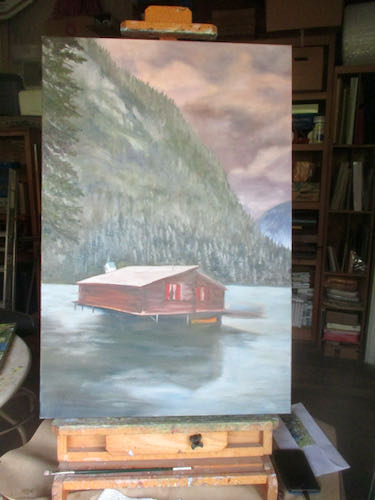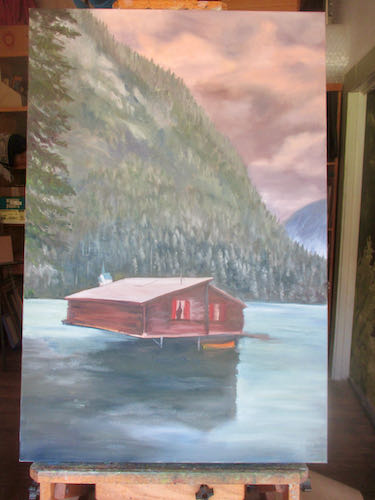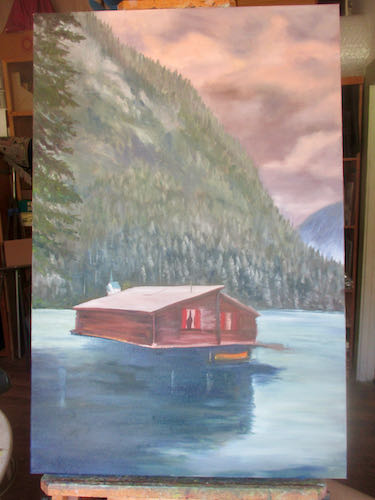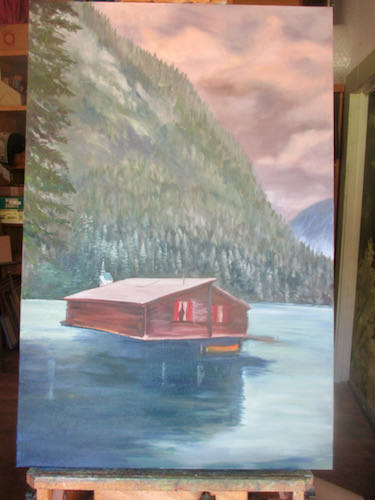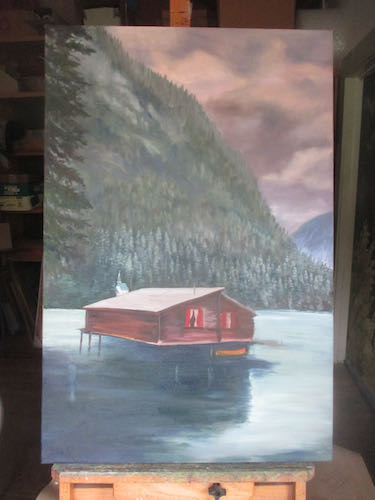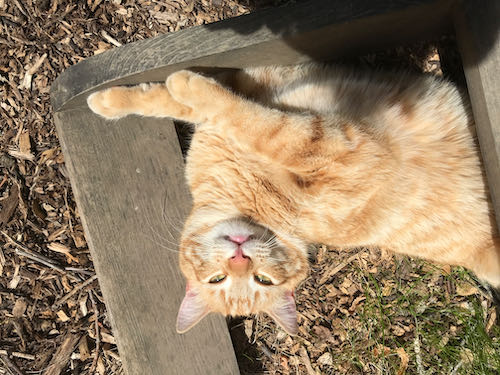For awhile I had a link in these emails of my daily blog post to take you to the site on the internet so you could see the photos. Now there is some tomfoolery happening with my blog, so I am not putting the link in until it gets sorted out. If you would like to see the pictures, go to jana botkin dot net (written this way to confound the evil robots who are messing things up.)
After figuring out how to get the right third of the mountains correct, I worked my way back across the canvas, using a darkish blue to delineate the parts I could see. I marked the center of the picture be able to gauge my progress.
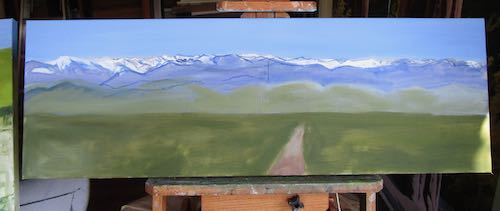
Wait! Where is Moro Rock?? It didn’t show up well from the top of Rocky Hill, and I forgot to be sure that it appears in the painting. I thought I knew these mountains. Recalibrating. . .
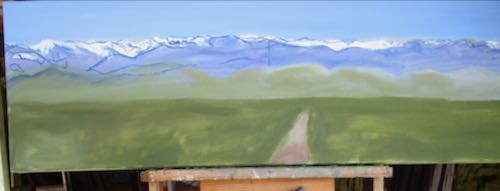
Why didn’t I know that the other 2/3 would be just as confusing?
Just my usual approach—the triumph of hope over experience.
Time to study all the photographs again and make some new sketches. I needed to see the section from Sawtooth north to Castle Rocks, and then the farthest north section from Castle Rocks to Moro Rock. Each photo had different information, and some were just useless. This made it easier, because there were fewer solutions to choose from.
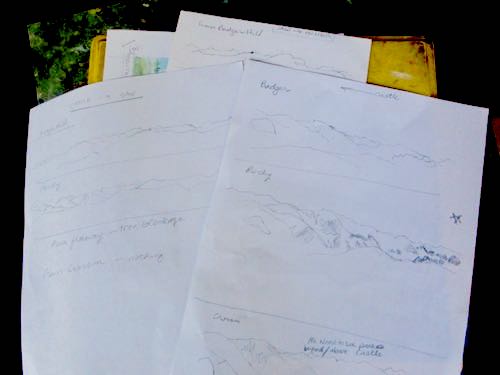
I made the contrast weirdly strong in order to see details, and also put a few lines on some of the photos. Here are just two samples of what I was working from: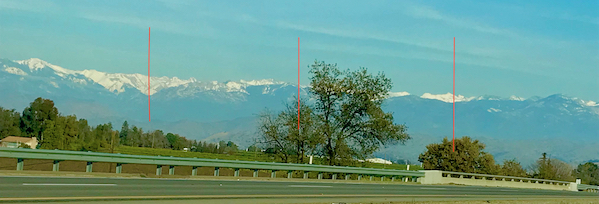

Sometimes there is a longer distance between Sawtooth and Homer’s Nose, sometimes Sawtooth barely shows, sometimes trees block peaks, and the light is always different, causing changing shadows that make it hard to recognize peaks.
There comes a point when decisions have to be made and paint must be applied. So, suck it up, buttercup, and make some progress here.
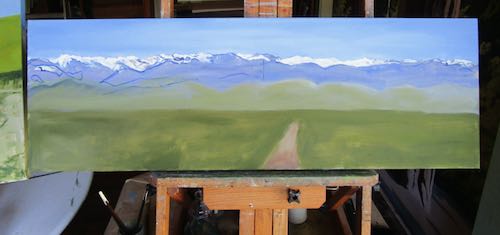
I believe these mountains are correctly placed, correctly sized, and accurately shaped.
The next step could be either to detail the distant mountains or to get all the foothills accurately placed.
Accurately placed from which viewpoint?
I thought I knew these mountains.
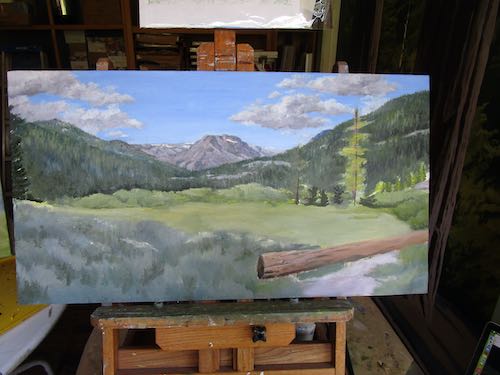
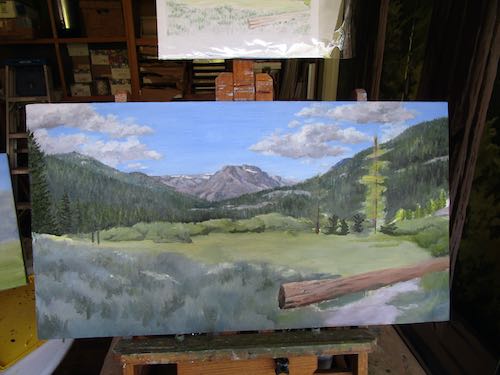
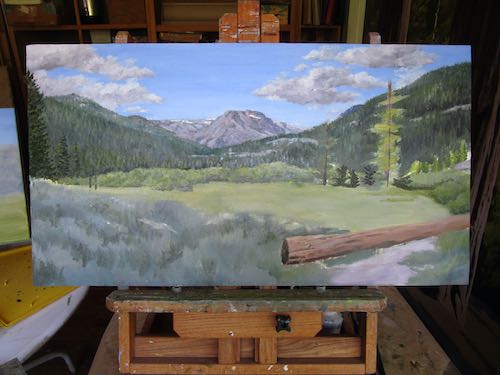
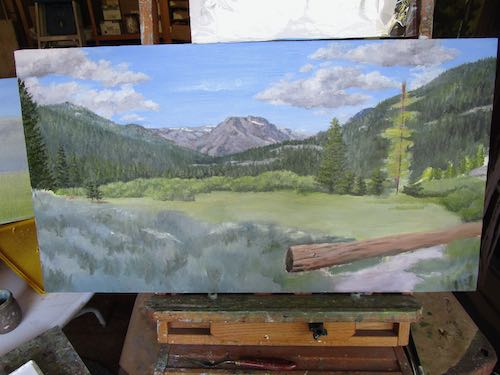
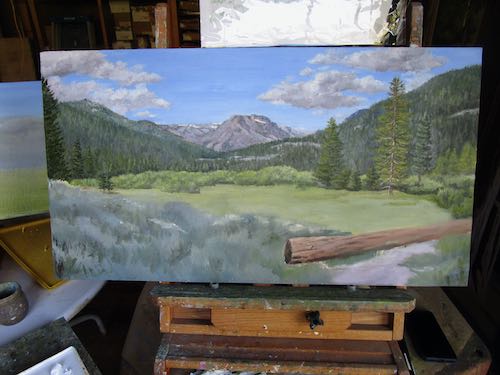
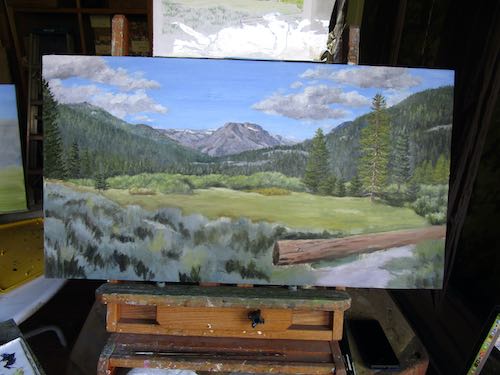
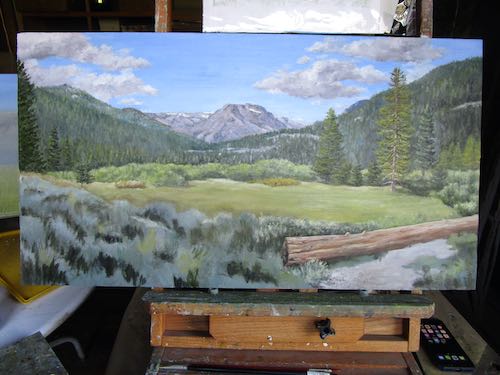
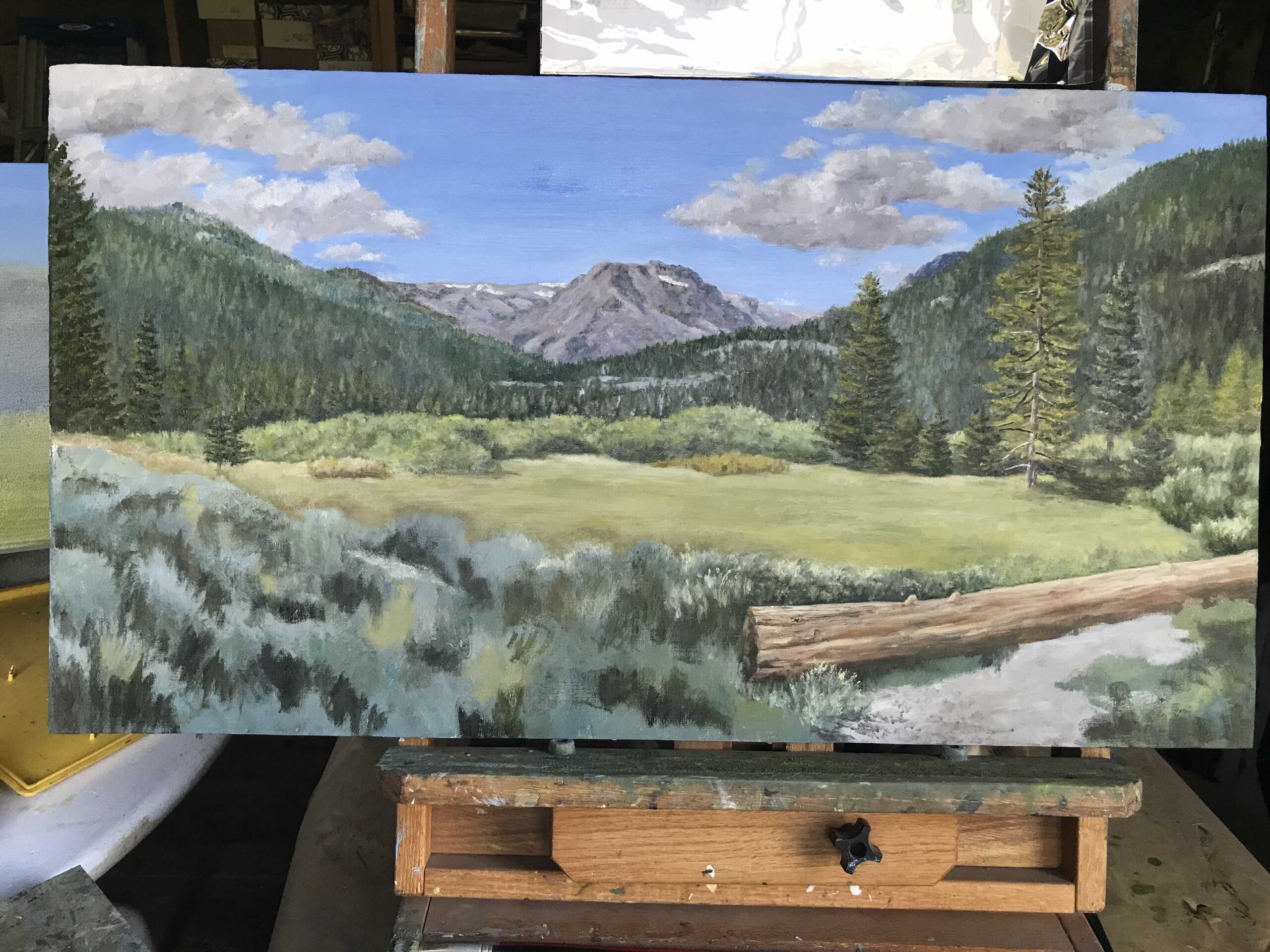 I am starting to really like this painting, which I have decided to call “Somewhere North of Tahoe”. Too bad I didn’t get my donkey in gear earlier this morning or I could have this painting finished now.
I am starting to really like this painting, which I have decided to call “Somewhere North of Tahoe”. Too bad I didn’t get my donkey in gear earlier this morning or I could have this painting finished now.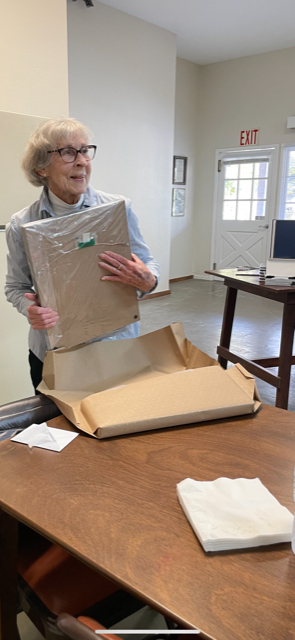
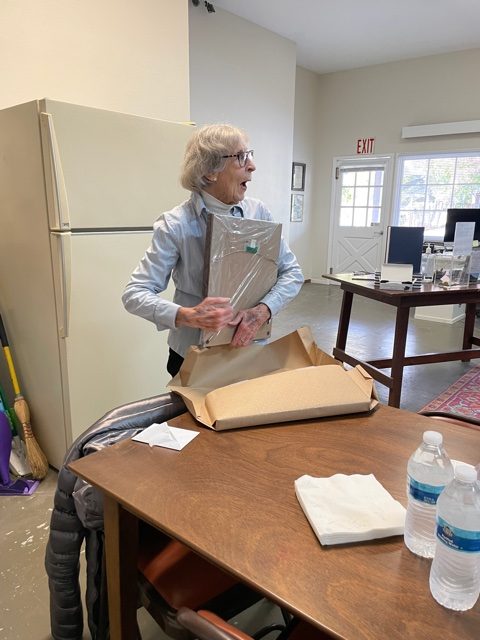
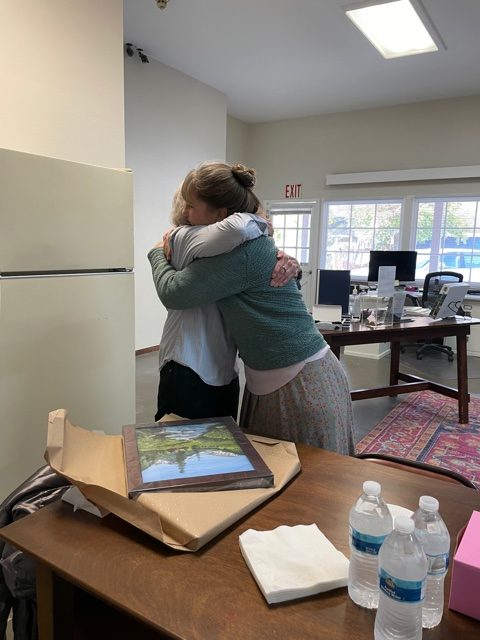
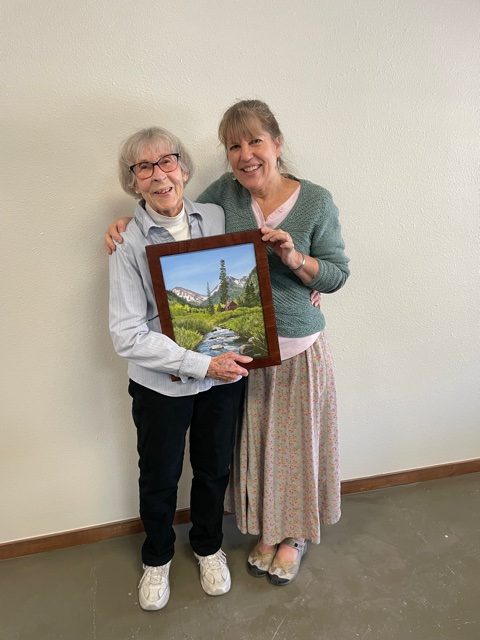 I love this lady.
I love this lady.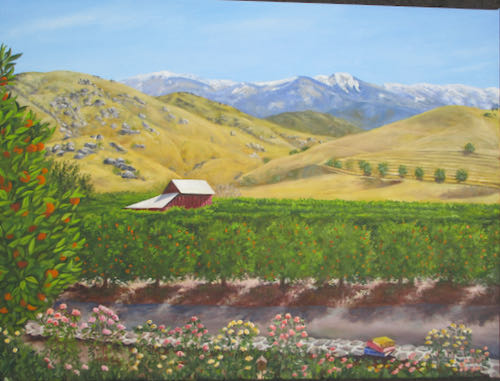
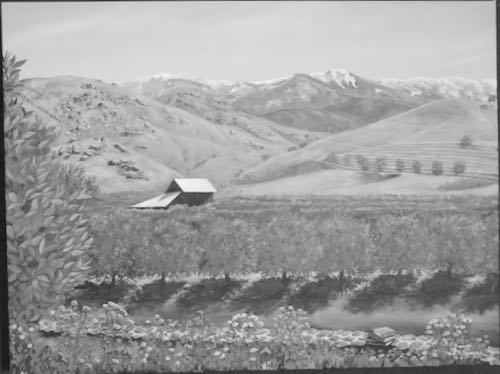
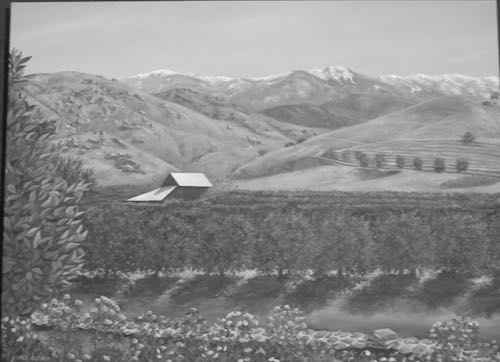
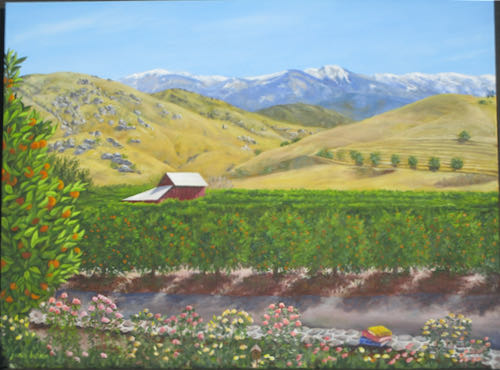
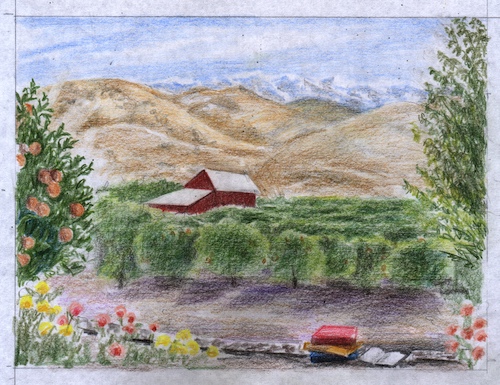
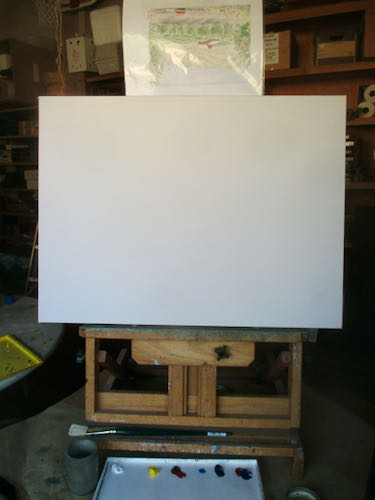
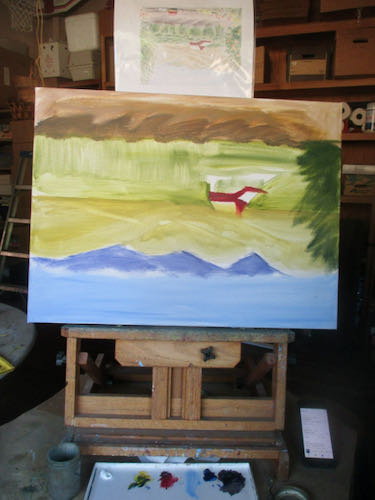
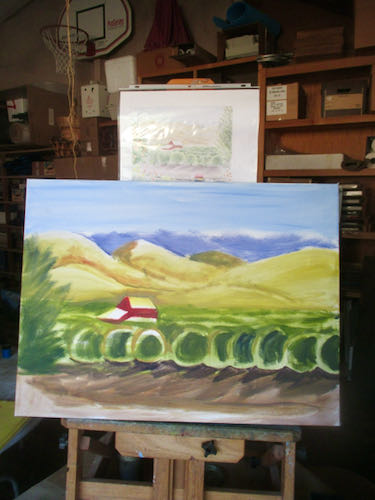
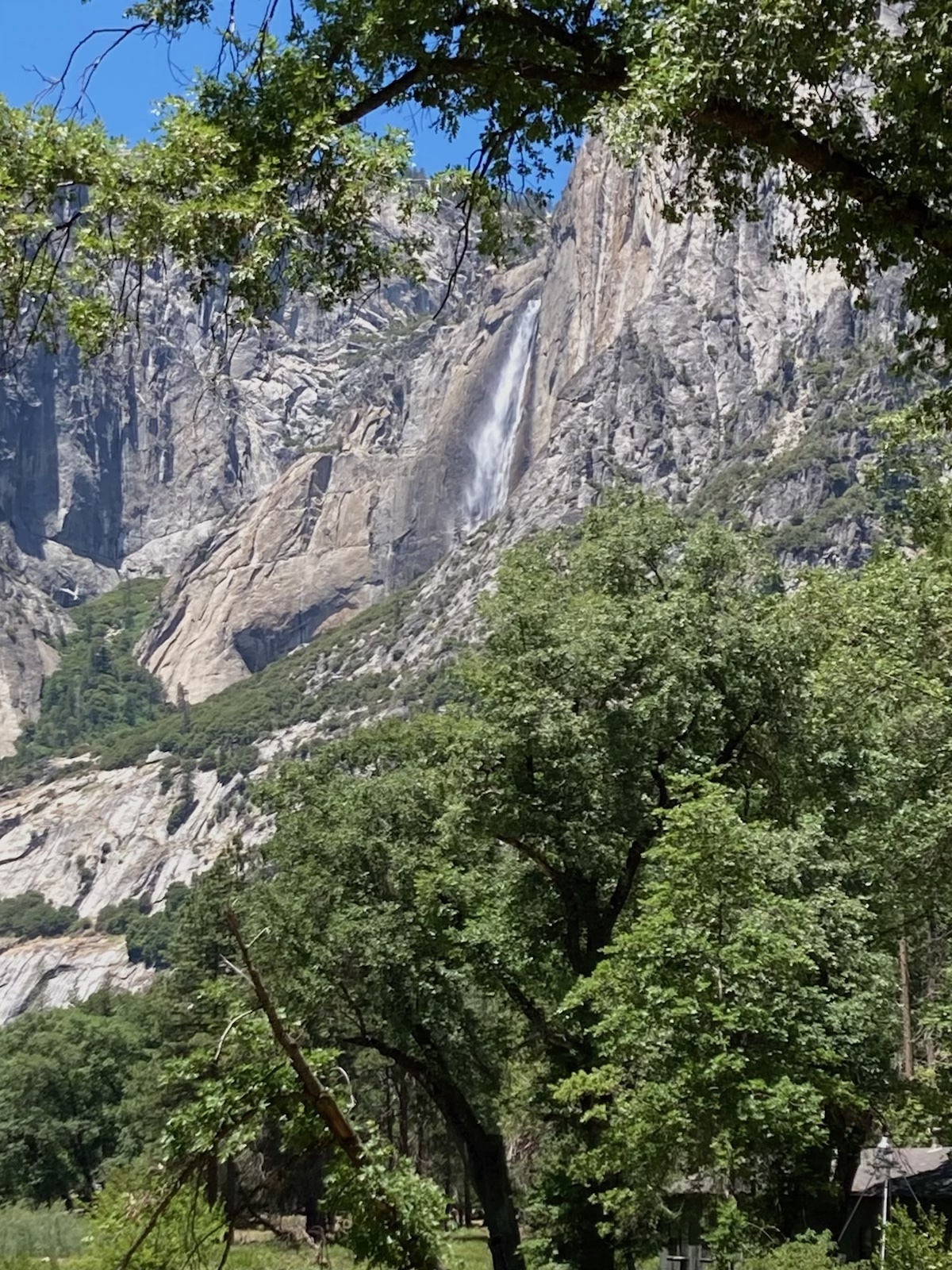










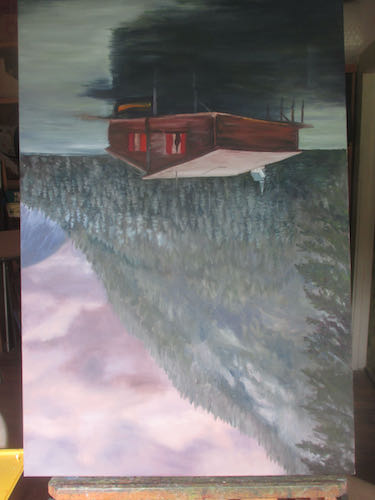
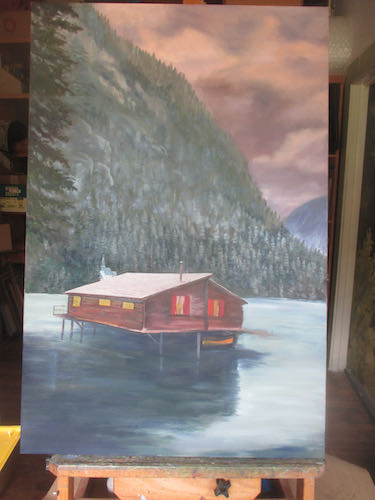
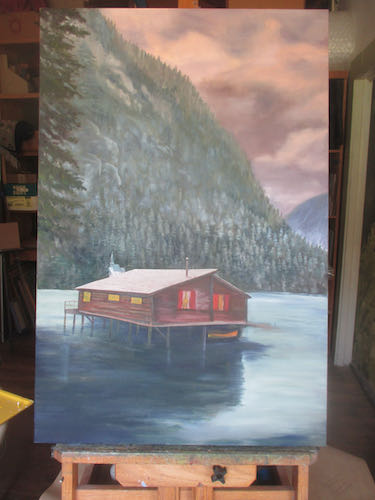
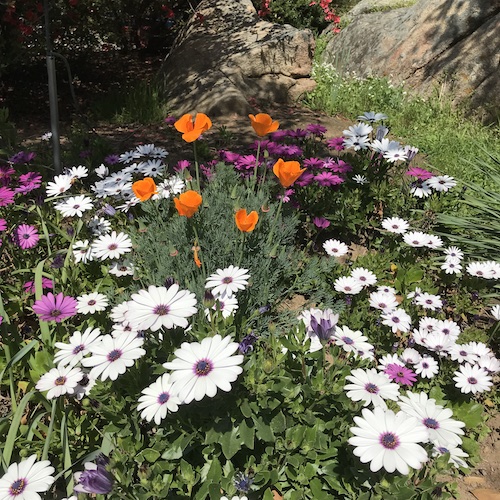
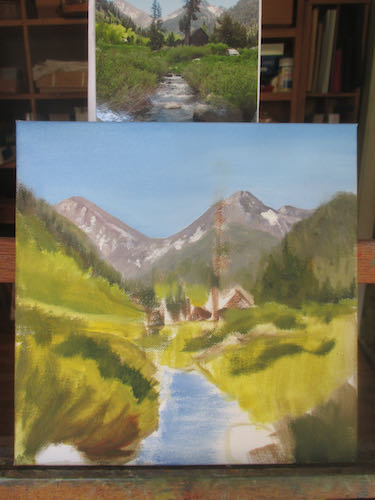
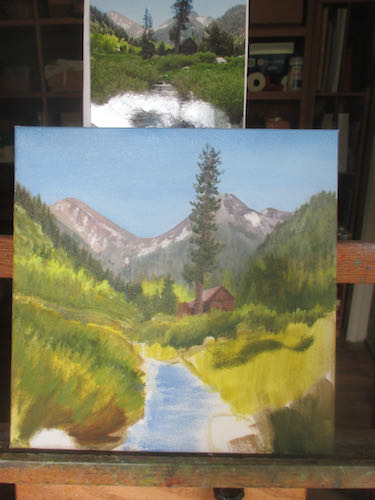
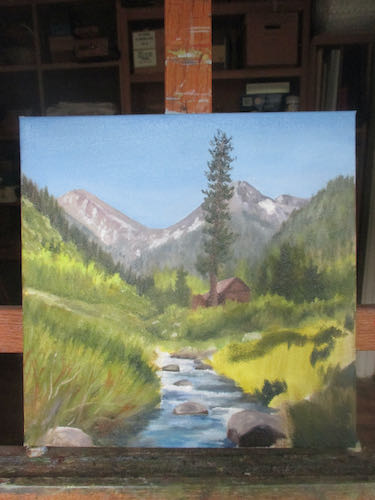

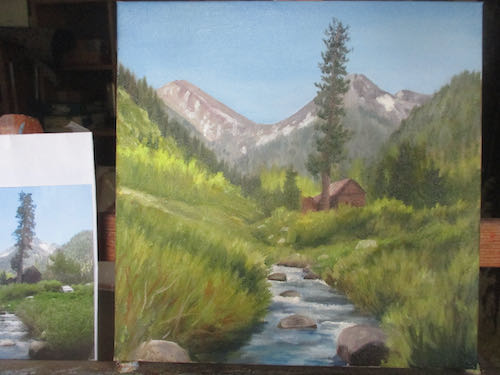
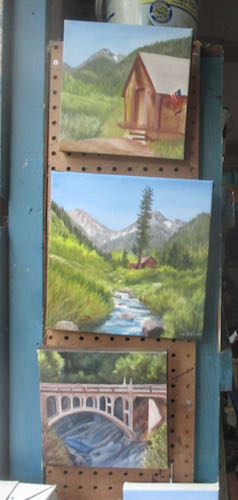
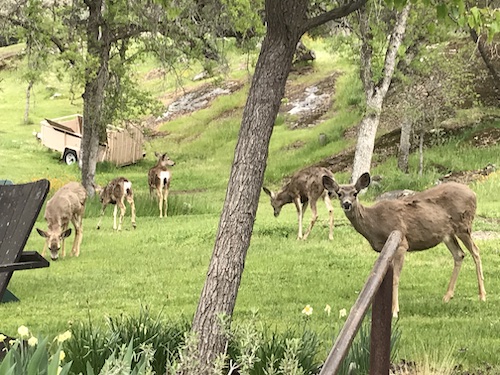 *Mineral King, of course
*Mineral King, of course